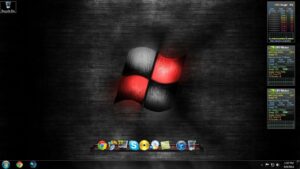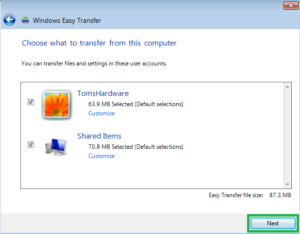Unveiling the Power of Windows 7: 7 Compelling Reasons to Make the Switch

Introduction:
As the digital landscape evolves, users are faced with the perennial question of which operating system best aligns with their needs. In the realm of Microsoft’s offerings, Windows 7 emerges as a timeless and reliable choice, providing a host of features that cater to both casual users and professionals. In this extensive exploration, we uncover seven compelling reasons why making the switch to Windows 7 is not just a choice but a transformative experience.
Chapter 1: Stability and Reliability
Windows 7, released in 2009, has stood the test of time and proven itself as a stable and reliable operating system. Unlike its predecessor, Windows Vista, which faced criticism for performance issues, Windows 7 introduced numerous improvements in system stability. We’ll delve into the enhanced system architecture, optimized resource management, and reduced system overhead that contribute to a more robust and reliable computing environment.
Chapter 2: Improved Performance and Speed
One of the standout features of Windows 7 is its impressive performance and speed. Building on the lessons learned from previous iterations, Microsoft refined the system to provide a more responsive and efficient user experience. We’ll explore how optimizations in memory management, improved startup times, and streamlined processes contribute to the overall speed of Windows 7, making it a worthy upgrade for users seeking a snappier computing environment.
Chapter 3: Enhanced User Interface
Windows 7 introduces a visually appealing and user-friendly interface that strikes a balance between aesthetics and functionality. The redesigned taskbar, Jump Lists, and Aero Peek features revolutionize the way users interact with their desktops. We’ll discuss the user interface refinements that not only provide a more visually pleasing experience but also enhance productivity and ease of navigation.
Chapter 4: Device Compatibility and Driver Support
For a seamless computing experience, having robust device compatibility and driver support is paramount. Windows 7 excels in this aspect, offering an extensive library of drivers and streamlined device installation processes. We’ll explore how the improved Plug and Play capabilities, enhanced Windows Driver Foundation, and broader industry support contribute to better hardware compatibility, ensuring that users can effortlessly connect and use a wide range of devices with Windows 7.
Chapter 5: Superior Networking Capabilities
Efficient networking is a cornerstone of modern computing, and Windows 7 brings forth numerous improvements in this domain. We’ll delve into features like HomeGroup, which simplifies file and printer sharing within a local network, and the enhanced Wireless and Internet Connection wizards that make setting up and managing network connections a breeze. Whether you’re a home user or a professional in a corporate environment, Windows 7’s networking capabilities are designed to streamline your connectivity experience.
Chapter 6: Advanced Security Features
In an era where cybersecurity is a top priority, Windows 7 doesn’t disappoint in providing advanced security features to protect users from evolving threats. We’ll explore the enhancements in User Account Control (UAC), Windows Defender, and Windows Firewall, showcasing how Windows 7 creates a secure computing environment. While it’s crucial to note that official support has ended, implementing best practices and utilizing third-party security solutions can further bolster the security of a Windows 7 system.
Chapter 7: Familiarity and Legacy Software Support
For users who appreciate a familiar and intuitive computing environment, Windows 7 offers a reassuring blend of the classic Windows experience with modern features. We’ll discuss how the familiarity of the Start menu, taskbar, and overall interface can provide a smooth transition for users upgrading from earlier Windows versions. Additionally, Windows 7’s compatibility modes and virtualization capabilities allow users to run legacy software seamlessly, preserving access to essential applications.
Conclusion:
As we conclude our exploration of Windows 7, it becomes evident that the operating system offers more than just a reliable computing experience; it presents a robust and versatile platform that caters to a diverse range of users. The stability, improved performance, enhanced user interface, device compatibility, networking capabilities, advanced security features, and support for legacy software make Windows 7 a compelling choice for those considering a switch. While acknowledging the end of official support, the enduring strengths of Windows 7 continue to resonate, solidifying its place as a timeless and transformative operating system in the realm of personal computing.







